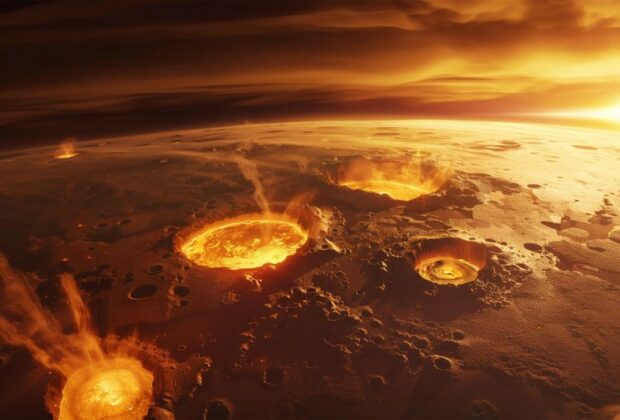Evidence suggesting Io’s volcanic activity has been continuous since the solar system’s formation has been reported by a group of planetary scientists and geologists from NASA Goddard Space Flight Center, the University of California Santa Cruz, New York University, and the California Institute of Technology. To ascertain how long the moon has been volcanically active, the team examined sulfur isotopes in Io’s atmosphere for their study, which was published in the journal Science.
Previous studies have revealed that the solar system is about 4.5 billion years old and that the most volcanically active body in the solar system is Io, the moon of Jupiter. But the duration of the moon’s activity was unknown to scientists until recently. The research team analyzed the gases in Io’s atmosphere using data from ALMA to find out.
The gravitational pull of Jupiter and its two moons, Ganymede and Europa, together, pull on Io, causing an accumulation of subsurface pressure that is released through volcanic eruptions. This is why Io is volcanically active. Because of the continual lava flow caused by the eruptions, the moon’s geography is always changing, making it challenging to understand more about its past.
The group concentrated on stable isotopic isotopes of sulfur and compounds containing chlorine from ALMA data. When compared to the atmospheres of other solar system planets and moons, they discovered that both were more abundant in Io’s atmospheric. The researchers also discovered that a significant proportion of sulfur isotopes—between 94% and 96%—that enter the atmosphere as a result of volcanic eruptions are lost to space. Based on available data, the continuous volcanism has been happening for around 4.5 billion years, or as long as Io has existed.
The research team intends to keep studying Io in order to determine whether the moon’s continuous volcanism caused its initial cooler phase to cease. Additionally, they will investigate the possibility that the moon once had an ocean or ice crust.








